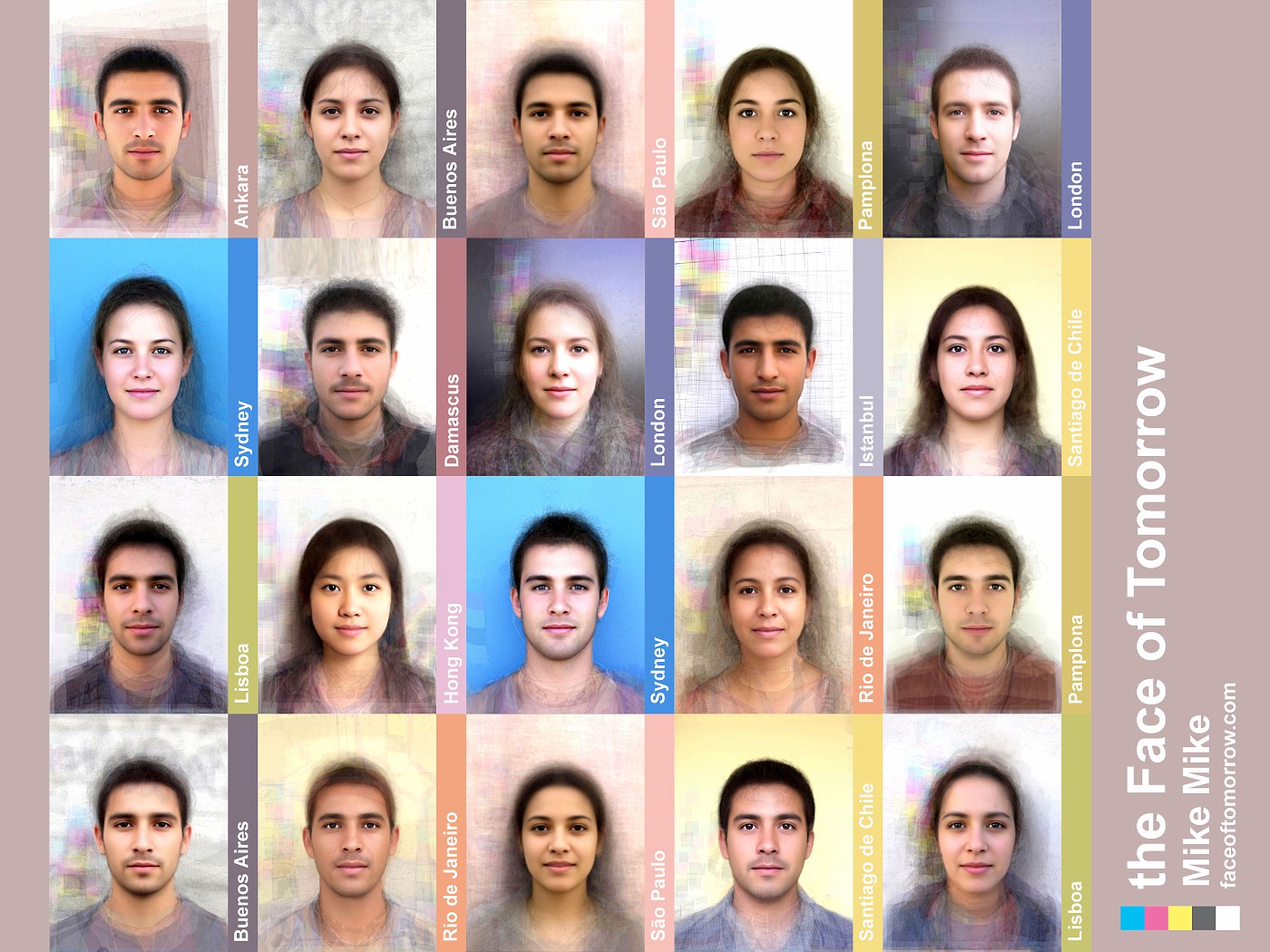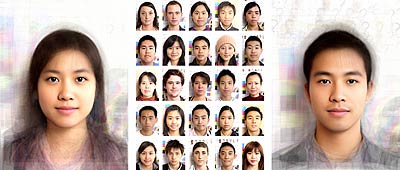Recently, in a number of my classes, the topics of globalization and multiculturalism has come up in relation to changing lifestyles, cultures, and identities . . . this brought me to once again consider Mike Mike’s project on the Face of Tomorrow: the Human Face of Globalization.

Basically, Mike takes a series of one hundred portrait photographs of people in a location and then considers them to be a random sampling that represents the genetic possibilities currently in that locale. He then uses morphing technology to combine these faces until a kind of “face for the place” emerges, a male face and a female face. Through extensive experimentation with numbers and technologies, he has come upon a process that when repeated in the same locale with different images, will usually produce the same face of the future, nearly identical. He calls this face the “face of tomorrow” for that locale.
For instance, the face of Hong Kong looks something like this:

This is a fascinating project that is at once art and cultural anthropology and science fiction. He has found that even if folks are not born in the locale, they still represent the genetic potential for that place in that time.
What is the face of London, New York, Paris? What does a Londoner, a New Yorker, a Parisian look like? The Face of Tomorrow is a concept for a series of photographs that addresses the effects of globalization on identity. The large metropolises of the world are magnets for migrants from all parts of the planet resulting in new mixtures of peoples. What might a typical inhabitant of this new metropolis look like in one or two hundred years if they were to become more integrated? In Turkey and particularly in Istanbul, situated as it is at the crossroads of Europe and Asia, of the Mediterranean and the Black Sea, you can see how this process has been at work over the last thousand years as waves of humanity from Central Asia, Arabia, Greece and Rome have been absorbed. The resulting population is fairly uniform suggesting that if you could combine all the faces in a city right now you would be looking at the future face of that city. The Face of Tomorrow attempts to find this face by taking photographs of the current inhabitants and compositing their faces to create a typical face. What we get is a new person – a mix of all the people in that city. A face that doesn’t exist right now, but a face, it seems, of someone quite real the Face of Tomorrow. The Face of Tomorrow is an open source project. Anyone can send in 100 photos and the project coordinator will composite the face for that city or place. All you need is a digital camera and a tripod. It takes a couple of hours and it’s a lot of fun. Take a look at The Source Code to see how this works in practice. In each city, the project organizer takes 100 photos of people in one specific location. He then divide these into male and female and from these he makes a composite face. He is not interested in whether a person was born in that place, whether they are a citizen or whether they are simply a tourist. Everyone who is in that place represents the future potential face of that place. In this way the Face of Tomorrow is like a census. A snapshot of a place at a moment in time. The present and the future.
While his webpages don’t seem to be as active as they had been, the project is evidently still ongoing. Of course, it would be even more fascinating if he had his project set up to create stereographic views of the various faces of the future . . . but, as it is, it is an extremely fascinating project.
See previous posts from Life of Brian on this project here and here.






